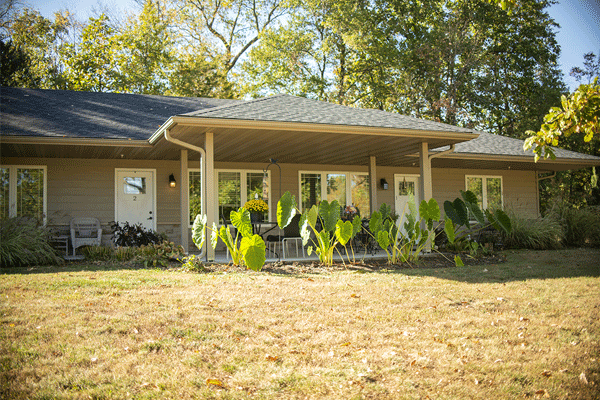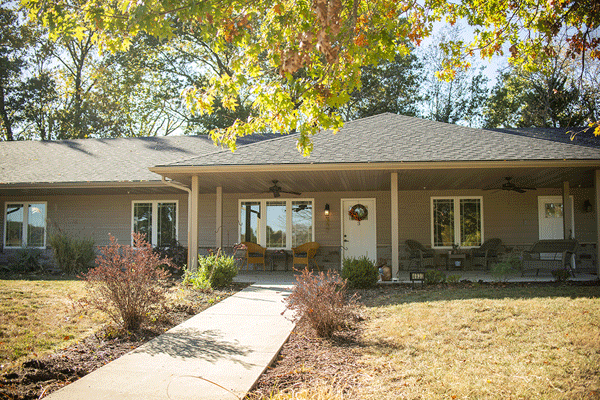Lake George Senior Living is a “small home” senior living community that is transforming senior living into a path of excellence. In recent years, a transformative shift has unfolded in the senior living space as conventional institutionalized nursing facilities are replaced by innovative “Small Home” Assisted Living, such as Lake George Senior Living. This progressive approach challenges established norms and delivers a multitude of benefits that significantly elevate the quality of life and care for seniors. So, why are Small Home Senior Living communities considered superior to their larger institutional counterparts?
A Homelike Place
The foremost advantage of Small Home Senior Living Communities lies in the homelike setting, not just the homelike environment they offer. In contrast to large nursing homes and assisted livings with long hallways, shared rooms, and a hospital-like appearance, small home communities mirror a true home. With 10-20 residents living together like a large family, communal spaces resembling a living room, dining room, and kitchen, where they can smell the aroma of home-cooked meals, foster a profound sense of belonging, comfort, and familiarity crucial for the overall well-being of seniors.
Better Quality of Life
Prioritizing the overall quality of life, Small Home Senior Living communities grant residents greater freedom and autonomy in shaping their daily routines, meals, and activities. This empowerment instills a sense of purpose and dignity, in contrast to institutionalized settings where rigid schedules are normal. Additionally, residents in small home facilities often enjoy better access to outdoor spaces and gardens, contributing to their physical and emotional well-being.
Person-Centered Care
Can you imagine providing personalized care for more than 100 residents? Large nursing facilities often face the challenge of providing personalized care due to the large number of residents and low staff-to-resident ratios. Small home model facilities, on the contrary, boast significantly higher staff-to-resident ratios, facilitating more one-on-one attention and tailored care for each resident. Caregivers in small communities develop personal connections with each resident and their families, knowing each resident’s quirks, resulting in a holistic and individualized approach to care. This environment provides dignity to residents.
Less Medication usage
Have you heard how polypharmacy negatively impacts seniors’ health? Unlike traditional nursing facilities where medication use is prevalent to control behaviors and routines, small communities emphasize non-pharmacological interventions. With ample staff available for activities, companionship, and personalized care, residents may experience a diminished reliance on medications, leading to improved health outcomes and a higher quality of life. If a resident likes to stay up late, we don’t give them sleep medications, which increases the fall. At small communities, we understand staying up late is their choice, and we respect them.

Better Infection Control
During the COVID-19 pandemic, the importance of infection control became obvious. “Small home” communities, with their smaller populations and dedicated staff, are better equipped to implement rigorous infection control measures, reducing the risk of outbreaks, and ensuring resident and staff safety.
Family and Friends Involvement
Family and friends play a crucial role in the care and well-being of their loved ones. Unlike large communities where visiting hours can be restricted, small senior living communities encourage an open-door policy, allowing family members to visit at any time. This active involvement of family and friends creates a support network for seniors and ensures they receive emotional support and companionship. Furthermore, caregivers not only know residents well but also their family members, leading to better communication and ultimately better health outcomes.
Stronger Sense of Community
Small senor living homes encourage a strong sense of community among residents and staff. With fewer residents in each facility, it’s easier to build close-knit relationships and develop a sense of belonging. Residents often eat meals together, participate in activities in small groups, and engage in meaningful social connections. This sense of community reduces feelings of isolation and loneliness, which are common issues in larger nursing homes and assisted living facilities. This ultimately reduces the dependence on psychotropic medications like antidepressants.
Enhanced Staff Satisfaction
Better staff satisfaction is a significant advantage of smaller communities. In these intimate settings, staff members report feeling more connected to residents, leading to greater fulfillment in their roles, higher job satisfaction, and lower turnover rates. They feel like their work truly makes a difference in residents’ lives. This is why we have low staff turnover at Lake George.
What Did We Learn?
The “small home” senior living represents a profound shift in senior care, prioritizing a homelike setting, personalized care, and a strong sense of community involvement. These communities offer numerous advantages over traditional nursing homes or large assisted livings, providing residents with a higher quality of life, reduced medication use, and a greater sense of purpose. Staff members also find higher job satisfaction, contributing to the well-being of both residents and caregivers. Embracing the “small home” model in senior living is a step in the right direction as the demand for compassionate and effective senior care continues to grow. At Lake George residents never feel like they are moving to a nursing home.

